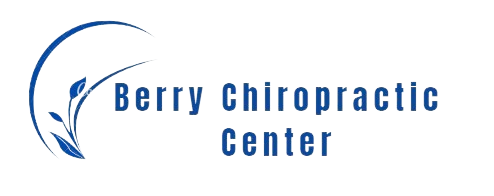The dilemma between choosing chiropractic care or physical therapy for back pain is not uncommon, as both offer distinctive approaches to pain management. The critical question is, which provides a more effective, long-lasting solution? Does the immediate relief offered by chiropractic manipulation outweigh the long-term benefits of physical therapy exercises? Or does the empowerment of self-healing through physical therapy offer a more sustainable path to recovery? Let’s explore these questions, diving into the details of each approach to provide a thorough understanding of their potential benefits and drawdowns.
Understanding Back Pain
Back pain, a pervasive health concern, affects a significant portion of the population at some point in their lives. This complex condition can stem from various factors, including lifestyle habits, injuries, or underlying health issues. Chronic pain, a scenario where discomfort persists for more than three months, is particularly challenging to manage. The World Health Organization reports that such chronic back pain is a leading cause of disability worldwide, underscoring the necessity for effective pain management strategies. Understanding the nature and cause of back pain is crucial for appropriate treatment. Evidence-based interventions range from medication to physical therapy and chiropractic care. These approaches aim to improve pain, function, and overall quality of life for individuals living with this debilitating condition.
Overview of Chiropractic Care
Chiropractic care, a widely recognized approach to treating back pain, employs a range of techniques that target the musculoskeletal structure, particularly the spine. These procedures, which we will examine, aim to alleviate pain and improve functionality. Moreover, we will explore the empirical evidence supporting the benefits of chiropractic care, touching on its efficacy and safety profile.
Understanding Chiropractic Techniques
An estimated 80% of people will experience back pain at some point in their lives, making it a prevalent health concern worldwide. Chiropractic techniques offer a drug-free alternative for mitigating such discomfort. Central to chiropractic benefits is spinal manipulation, a treatment aimed at re-establishing normal spinal mobility. The efficacy of this treatment lies in its ability to alleviate pressure on the nervous system, promoting the body’s self-healing capabilities. Other techniques, like mobilization and soft tissue therapy, work synergistically to improve overall physical function. Chiropractors also employ diagnostic methods such as clinical examination, laboratory testing, and diagnostic imaging to determine the most suitable treatment. Understanding these techniques is essential in appreciating the role of chiropractic care in managing back pain.
Benefits of Chiropractic Care
While it might seem counterintuitive, chiropractic care serves as a non-invasive and drug-free approach that can bring about significant relief for individuals suffering from back pain. A key chiropractic benefit lies in this holistic approach, focusing on the body’s innate ability to heal itself. Studies have shown that chiropractic adjustments reduce pain and improve function more effectively than pain medication. The manipulation of the nervous system helps regulate inflammatory responses, reducing back pain and related symptoms. In addition, chiropractic care encourages a healthier lifestyle, promoting physical activity and proper nutrition. It also emphasizes the importance of good posture and ergonomics, essential in preventing back pain. Hence, the benefits of chiropractic care extend beyond immediate relief, fostering long-term wellness and pain management.
Techniques Used in Chiropractic Treatments
In chiropractic therapy, a variety of techniques are employed, foremost among these being spinal manipulation and chiropractic adjustment methods. Spinal manipulation involves the manual application of controlled force to joints that have become restricted in their movement. On the other hand, chiropractic adjustment methods are a more specific set of techniques designed for the realignment of vertebrae that have moved out of position.
Spinal Manipulation Technique
Chiropractic treatment frequently employs the Spinal Manipulation Technique as a key method for addressing back pain. This technique is a high-velocity, low-amplitude thrust applied to the spinal joints, designed to restore ideal movement and improve spinal health. Clinical studies have shown significant manipulation benefits in pain reduction and functional outcomes for patients suffering from both acute and chronic back disorders. A systematic review in the Journal of Manipulative and Physiological Therapeutics reported that spinal manipulation led to significant improvements in pain and function for patients with chronic low back pain. As a result, it is evident that the Spinal Manipulation Technique plays a pivotal role in chiropractic treatment, contributing to overall spinal health and wellbeing.
Chiropractic Adjustment Methods
Although the Spinal Manipulation Technique is a well-known method in chiropractic treatment, it is just one of the many techniques chiropractors utilize to alleviate back pain. Among the variety of chiropractic adjustment types are the Diversified Technique, which uses a high-velocity, low-amplitude thrust to restore proper movement and alignment to the spine; and the Activator Method, which uses a hand-held mechanical instrument to deliver a gentler, low-force impulse. The Thompson Technique involves a special drop-piece mechanism to adjust the full spine. Patient adjustment experiences vary depending on the technique used, with some reporting immediate relief and others requiring multiple sessions. Each method is evidence-based, and their application is tailored to the individual patient’s condition and comfort level.
Pros and Cons of Chiropractic Care
Opting for chiropractic care can offer several benefits and drawbacks for individuals suffering from back pain. A primary chiropractic benefit is its non-invasive nature, often preferred by patients wary of surgery or medication. Many patient experiences suggest significant improvement in back pain and mobility after treatment. Chiropractic care is also known for its holistic approach, focusing on overall health improvement.
However, it’s not without cons. Some patients report temporary discomfort after adjustments. Additionally, while chiropractic care can help manage pain, it may not address the root cause of all back issues, specifically those requiring surgical intervention. Also, the efficacy of chiropractic treatments varies greatly among individuals, making it a less predictable choice. As such, while chiropractic care offers notable benefits, its drawbacks necessitate careful consideration.

Overview of Physical Therapy
Physical therapy, another treatment option for back pain, involves therapeutic exercises and manual techniques to improve mobility, reduce pain, restore function, and prevent disability. It is a patient-specific approach, meaning the treatment plan is customized based on the individual’s specific pain intensity, physical capabilities, and therapeutic goals. It often includes rehabilitation exercises designed to strengthen the back, improve flexibility, and promote better posture. Furthermore, physical therapy provides effective pain management strategies that can help patients reduce their reliance on pain medications. This is particularly beneficial for those with chronic back pain, as it offers a more sustainable and holistic solution. Fundamentally, physical therapy empowers patients to take an active role in their recovery process, promoting long-term health and wellness.
Techniques Used in Physical Therapy
A plethora of techniques are utilized in physical therapy to alleviate back pain and enhance overall physical function. Therapeutic exercises form the cornerstone of these techniques, specifically tailored to the individual’s condition and pain level. These exercises promote muscle strength, flexibility, and endurance, directly contributing to pain management and improved functionality. Manual therapy is another widely used technique, involving hands-on manipulation of the body to relieve pain and improve movement. Other techniques may include postural training and body mechanics education to correct alignment issues and prevent future injuries. Additionally, physical therapists often incorporate modalities like electrotherapy, heat, or cold therapy in their treatment plans. These methods work synergistically to provide extensive, evidence-based care for back pain patients.
Pros and Cons of Physical Therapy
There are several advantages and disadvantages associated with physical therapy that must be evaluated when addressing back pain. On the plus side, physical therapy offers exercise benefits that promote strength and flexibility, vital in preventing further injuries. It also equips patients with pain management techniques that help reduce dependence on medication. Additionally, physical therapy is non-invasive and comes with minimal side effects.
However, it’s not without drawbacks. Physical therapy requires a significant time commitment, which may not be feasible for everyone. Also, progress can be slow and requires consistent effort from the patient. In some cases, it may not provide complete relief from severe back pain. Therefore, while physical therapy can be beneficial, it’s important to evaluate these factors before deciding on a course of treatment.
Making the Right Treatment Decision
How does one choose between chiropractic care and physical therapy for back pain? The decision should be based on a combination of factors including research-backed treatment options and patient preferences. A thorough understanding of the benefits and potential risks associated with each option is essential. Studies have shown that both chiropractic and physical therapy can provide significant relief for back pain. However, the effectiveness of each treatment can vary depending on the type of back pain, its severity, the patient’s overall health, and their responsiveness to treatment. As a result, patient preferences, comfort with the treatment style, and their commitment to the recovery process also play important roles. Ultimately, a personalized treatment plan combined with a strong patient-practitioner relationship is key to successful back pain management.
Frequently Asked Questions
What Is the Cost Comparison Between Physical Therapy and Chiropractic Care?
Cost analysis reveals variability in treatment affordability. Typically, physical therapy sessions are more costly than chiropractic care. However, prices fluctuate based on location, insurance coverage, and specific patient needs, making individualized comparisons necessary for accurate evaluation.
Is a Referral Needed to See a Physical Therapist or a Chiropractor?
The referral process for a physical therapist or chiropractor is largely dependent on individual insurance coverage. Some plans may require a referral while others allow direct access to these specialties without a doctor’s referral.
How Long Does a Typical Chiropractic or Physical Therapy Session Last?
Typically, a chiropractic or physical therapy session lasts between 30 to 60 minutes. The duration may vary depending on the individual’s condition and therapy frequency, which is often determined by the healthcare professional.
Are There Any Side Effects After Receiving Chiropractic Adjustments or Physical Therapy?
Potential side effects after chiropractic adjustments may include temporary discomfort, fatigue, or headache. Physical therapy could lead to temporary soreness. However, these effects typically subside quickly and are outweighed by the long-term benefits.
Can Chiropractic Care and Physical Therapy Be Used in Conjunction for Back Pain Treatment?
Absolutely, chiropractic care and physical therapy can be combined for back pain treatment. The chiropractic benefits can be amplified with physical therapy techniques, providing an extensive approach to pain management and functional improvement.






